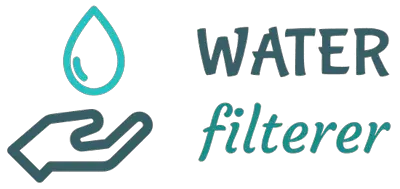An RO, or reverse osmosis, the system is a filtering system that helps to remove impurities from water by using pressure to force water molecules through a semipermeable membrane.

This process removes dissolved solids, including ions and certain minerals, from the water as well as organic compounds and bacteria. The result is clean, purified water that is safe to drink.
How an RO System Works
An RO system typically consists of four main components: a sediment filter, a pre-carbon filter, the RO membrane, and a post-carbon filter. Water first enters the sediment filter, which then removes any large particulates from the water.
Next, the water passes through the pre-carbon filter, which removes chlorine and other chemicals that can damage the RO membrane.
Once the water passes through the pre-carbon filter, it comes in contact with the RO membrane. The RO membrane is semi-permeable, which means that it allows water molecules to pass through but traps impurities on the other side.
These holes are just the right size to filter out dissolved solids and impurities but allow the clean, pure water molecules to pass through the membrane. The impurities are then flushed away while the purified water is collected in a tank.
The purified water is then passed through a post-carbon filter to remove any lingering taste or odor before it is ready for use.
An RO system is particularly useful for people who want to remove chemicals, pesticides, and other contaminants from their water source.
Can you run an RO system without a tank?
Almost all RO systems include a storage tank that is pressurized to help maintain water flow. The size of the tank will vary depending on your specific needs.
Most under-sink storage tanks are metal canisters that hold 3 gallons of water, with a pressurized seal inside to keep the water from spilling out.
Because Reverse Osmosis is known to be an inefficient process, a storage tank is a necessary evil. Despite there being enough water pressure to feed the system, the flow rate of filtered water is significantly slower than unfiltered tap water from plumbing.
Reverse Osmosis systems with a tank will continuously filter water and store it until you need it. This allows you to enjoy clean, pure water anytime without worrying about the flow rate or waiting for the system to catch up.
Filtered water is stored in a tank and delivered to the dedicated faucet at a higher pressure than what the filters could provide in real time.
As the water level in the tank reaches a certain level, it will automatically trigger the system to begin filtering and replenishing the water in the tank.
The advantages of this system are clear:
- It produces clean water before it is required.
- The filtered water always arrives quickly and at constant pressure.
- There is no risk of running out of clean drinking water, even during peak hours.
- The storage tank provides a buffer that allows the system to keep running continuously, even when there is peak usage.
Tankless RO Systems
“Tankless” RO systems have recently increased in popularity and are now available as an alternative to traditional systems with storage tanks.
Unlike RO systems that need a large tank, tankless RO systems contain a pump that creates the right pressure for more processing power and a nearly seamless water supply.
These systems are also said to be more efficient than traditional RO systems, as they do not need to continuously filter and replenish water in a tank
The water is processed as soon as you turn on the faucet, and then it’s sent directly to the faucet. This means that you can get clean drinking water from the tap whenever you need it without waiting for the system to catch up.
The main advantages of tankless RO systems are that –
- They have no limits on water volume imposed by tank size,
- They offer space savings under the sink of 50 to 75%.
- They are an attractive option for people who want to reduce the amount of space their water filtration system takes up.
Despite some of the benefits associated with tankless RO systems, they are still a relatively new technology.
For these reasons, it is important to talk to your water filtration system provider to learn more about the different options available and find the right system for your needs
Conclusion
RO systems are a great way to filter impurities from your water supply. And while they do require a storage tank, that tank is essential for ensuring continuous, high-quality water for your home or office.
If you are considering an RO system, be sure to choose one with a large, high-quality tank to ensure consistent, reliable water flow.

